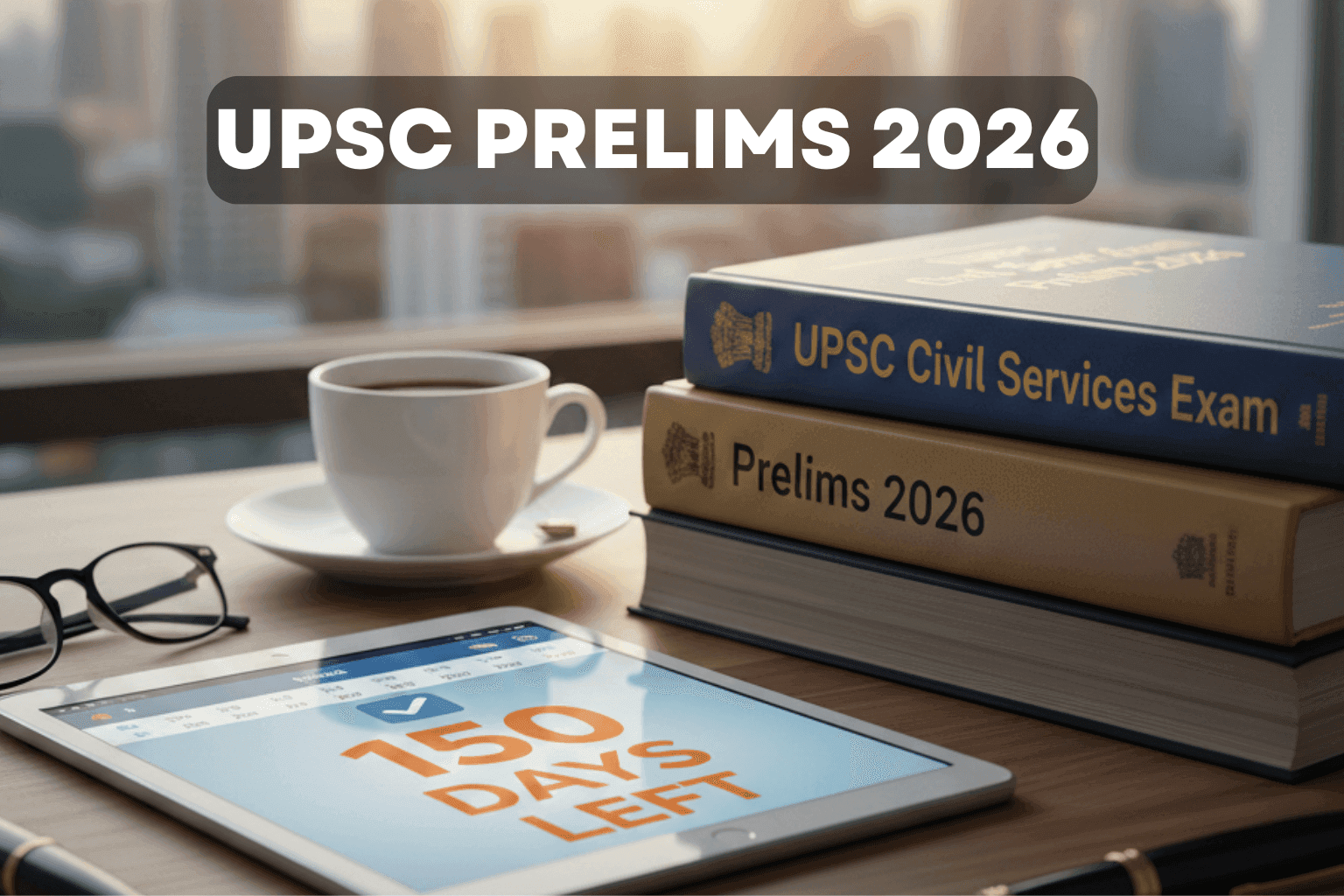UPSC Civil Services Prelims 2025 Paper Analysis
Jul, 2025
•5 min read
The UPSC Civil Services Preliminary Examination 2025 was conducted on 25 May 2025. This year’s paper brought a mix of relief and challenges for the lakhs of aspirants who appeared across the nation. The General Studies Paper- I was characterized as moderate to moderately complex, while the CSAT Paper- II emerged as the real difficulty, being notably more challenging than in previous years.
The paper reflected UPSC’s continued emphasis on analytical thinking over rote memorization, with a clear shift toward application-based questions that tested candidates’ ability to connect concepts. This comprehensive analysis of the UPSC Civil Services Prelims 2025 paper provides essential insights for current and future aspirants. It examines every aspect, from difficulty levels to strategic preparation approaches for upcoming attempts.
UPSC Prelims Paper 2025: Highlights
The examination results were declared on June 11, 2025, with 14,161 candidates qualifying for the Mains examination out of approximately 5-6 lakh candidates who appeared. This represents a qualification rate of approximately 2.4%, maintaining the examination's highly competitive nature.
Understanding the examination trends and patterns that shaped this year’s paper is crucial for effective preparation. Let's delve deeper into these to help you strategize for your next attempt.
Prelims 2025: Trends and Key Takeaways
The examination highlighted the UPSC’s changing approach to analytical and application-based questions, especially in the Science & Technology and Economy sections. Candidates were presented with longer question statements that contained multiple sub-parts, requiring enhanced time management skills and a deeper conceptual understanding.
Key observations from the 2025 paper include:
- Increased emphasis on conceptual clarity over factual recall
- Integration of current affairs with static subjects
- Application-oriented questions in technical subjects
- Longer question formats with multiple statements requiring elimination techniques
The paper required sharper analytical skills and better time management compared to previous years, reflecting the UPSC’s commitment to selecting candidates with a deeper understanding.
Now, let's learn how different subjects contributed to this year's examination pattern.
Also read: UPSC Prelims 2025 Detailed Analysis.
Subject-wise Analysis: Breaking Down the 100 Questions
The analysis of question distribution across subjects in UPSC Prelims 2025 revealed notable patterns that reflect the UPSC's evolving priorities and their contemporary relevance.
| Subject | Number of Questions | Percentage of Paper | Difficulty Level | Key Focus Areas |
| Economics | 18 | 18.0% | Easy to Moderate | Banking, Monetary Policy, Fiscal Policy, Digital Payments. |
| Environment & Ecology | 15 | 15% | Moderate | Climate Change, International Agreements, Conservation |
| Indian Polity | 14 | 14% | Moderate | Constitutional Articles, Governance, Recent Amendments |
| Science & Technology | 13 | 13% | Moderate to Difficult | Space Technology, Defense, IT, Biotechnology |
| Modern History | 8 | 8% | Easy to Moderate | Independence Struggle, Freedom Fighters |
| International Relations | 8 | 8% | Moderate | Current Global Issues, India's Foreign Policy |
| Physical Geography | 7 | 7% | Moderate | Map-based Questions, Environmental Geography |
| Ancient History | 6 | 6% | Easy to Moderate | NCERT-based Factual Questions |
| World Geography | 5 | 5% | Moderate | Applied Geographical Concepts |
| Social Issues & Schemes | 3 | 3% | Easy to Moderate | Government Schemes, Social Policies |
| Art & Culture | 2 | 2% | Easy to Moderate | Static Cultural Topics |
| Indian Geography | 1 | 1% | Easy | Basic Geographical Facts |
The economy section had the highest number of questions, with 17 highlighting a growing emphasis on economic policies and their practical applications. The History and Culture section also saw significant growth, featuring 16 questions. Notably, Modern Indian History accounted for nine of these questions, which specifically focused on the Independence Struggle.
This distribution pattern reflects UPSC’s focus on balanced preparation across all subjects and emphasizes the increasing importance of application-based understanding.
UPSC Prelims 2025 Expected Cut Off
Based on comprehensive analysis and expert predictions, the expected cut-off ranges are:
| Category | Expected Cut-off Range |
| General | 85-90 marks |
| OBC | 80-85 marks |
| SC | 74-79 marks |
| ST | 69-74 marks |
| EWS | 80-85 marks |
The moderate to challenging difficulty level suggests the cut-off will likely fall within the 79-86 mark range for the General category. Scores of 90+ are considered very safe, while 85-89 fall into a grey zone requiring CSAT qualification.
Moving forward, let’s explore what mistakes future aspirants should avoid based on this year’s patterns.
Also read: UPSC Prelims Previous Year Question Papers (2011–2025)
Common Mistakes to Avoid for UPSC Prelims 2026
Based on the experiences of 2025 candidates and expert insights, here are the critical mistakes that future aspirants should avoid:
1. Overthinking and Second-Guessing
Many candidates fell into the trap of changing their first instinct answers due to overanalysis. UPSC questions often have straightforward answers, and your initial response is usually correct.
How to avoid: Trust your preparation and stick to your first instinct unless you’re sure about the correction.
2. Neglecting Current Affairs Integration
Questions weren’t just static; they required linking current developments with foundational concepts.
How to avoid:
- Read newspapers daily with a focus on linking events to static topics.
- Maintain current affairs notes that connect with the GS subjects.
- Practice questions that integrate current affairs with static knowledge.
3. Ignoring Previous Years' Papers
Many aspirants underestimated the importance of PYQ analysis, missing crucial question patterns.
How to avoid:
- Analyze at least 10 years of previous papers.
- Identify recurring themes and question types.
- Practice topic-wise PYQs after completing each subject.
4. Inadequate Revision Strategy
The vast syllabus led many to keep reading new material without adequate revision.
How to avoid:
- Follow the 1-3-7-15 revision cycle.
- Prepare concise notes for quick revision.
Allocate 40% of your time to revision in the final months
5. Neglecting Mock Test Analysis
Taking mock tests without proper analysis defeats the purpose of practice.
How to avoid:
- Analyze every mock test thoroughly.
- Identify patterns in mistakes.
- Work specifically on the weak areas identified through mocks.
6. Over-reliance on Single Sources
Candidates who depended solely on coaching materials struggled with diverse question patterns.
How to avoid:
- Use NCERT as a foundation and supplement with standard references.
- Diversify your reading sources while maintaining focus.
- Regular revision of multiple perspectives on the same topic.
By consciously avoiding these mistakes through strategic planning, aspirants can significantly improve their preparation effectiveness and increase their chances of success.
Conclusion
The UPSC Prelims 2025 highlighted the importance of having a balanced approach to succeed in this examination. It requires a combination of thorough knowledge, analytical thinking, and strategic preparation. While the exam continued to be unpredictable, it favored candidates who had established solid conceptual foundations and had practiced extensively with analytical questions.
Clearing the UPSC Prelims is not about perfection, but about making fewer mistakes than your competitors. Learn from the experiences of 2025 candidates, avoid common pitfalls, and approach your preparation with discipline and strategic thinking.
Join SuperKalam now and let’s turn your effort into excellence!


